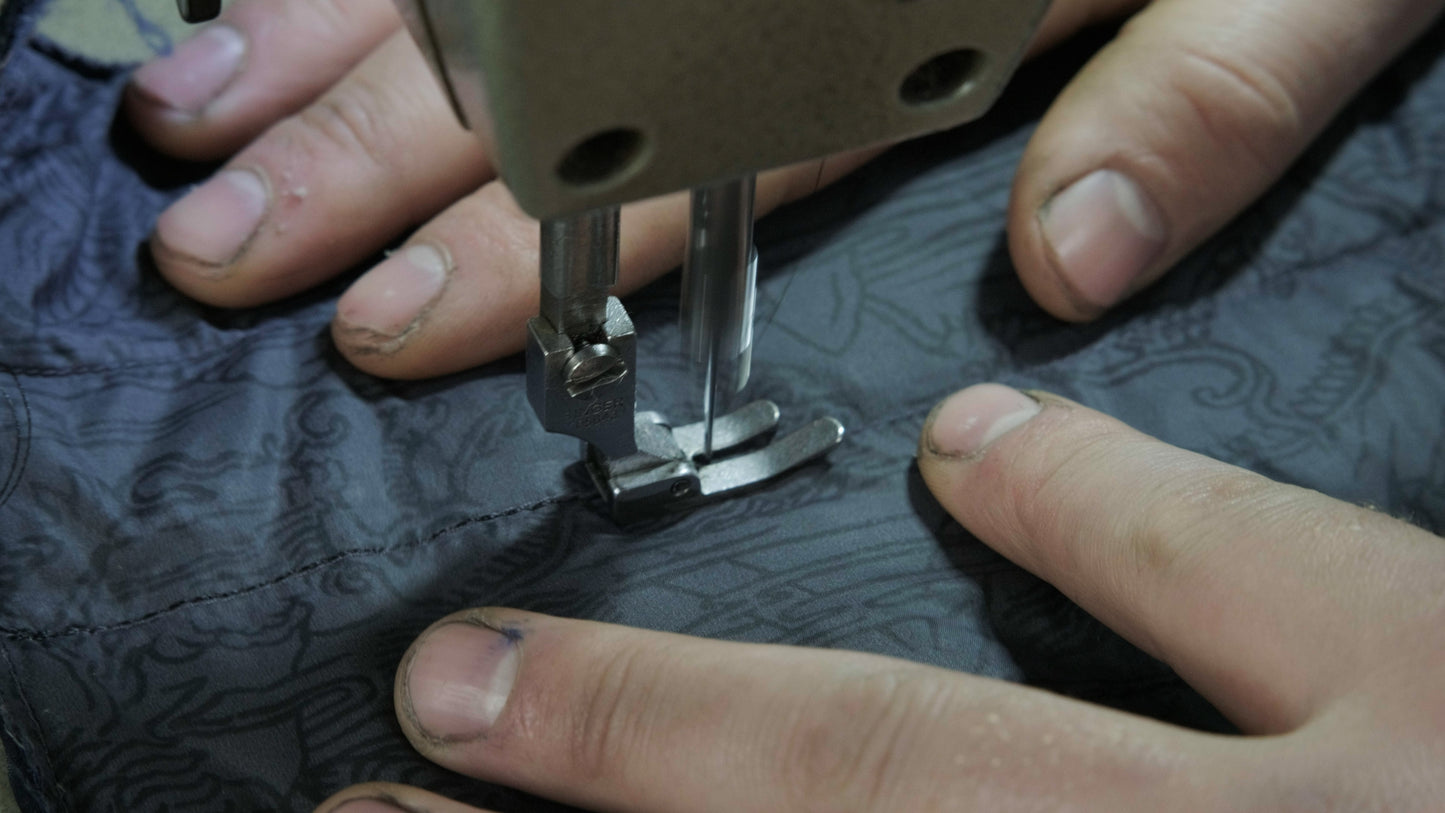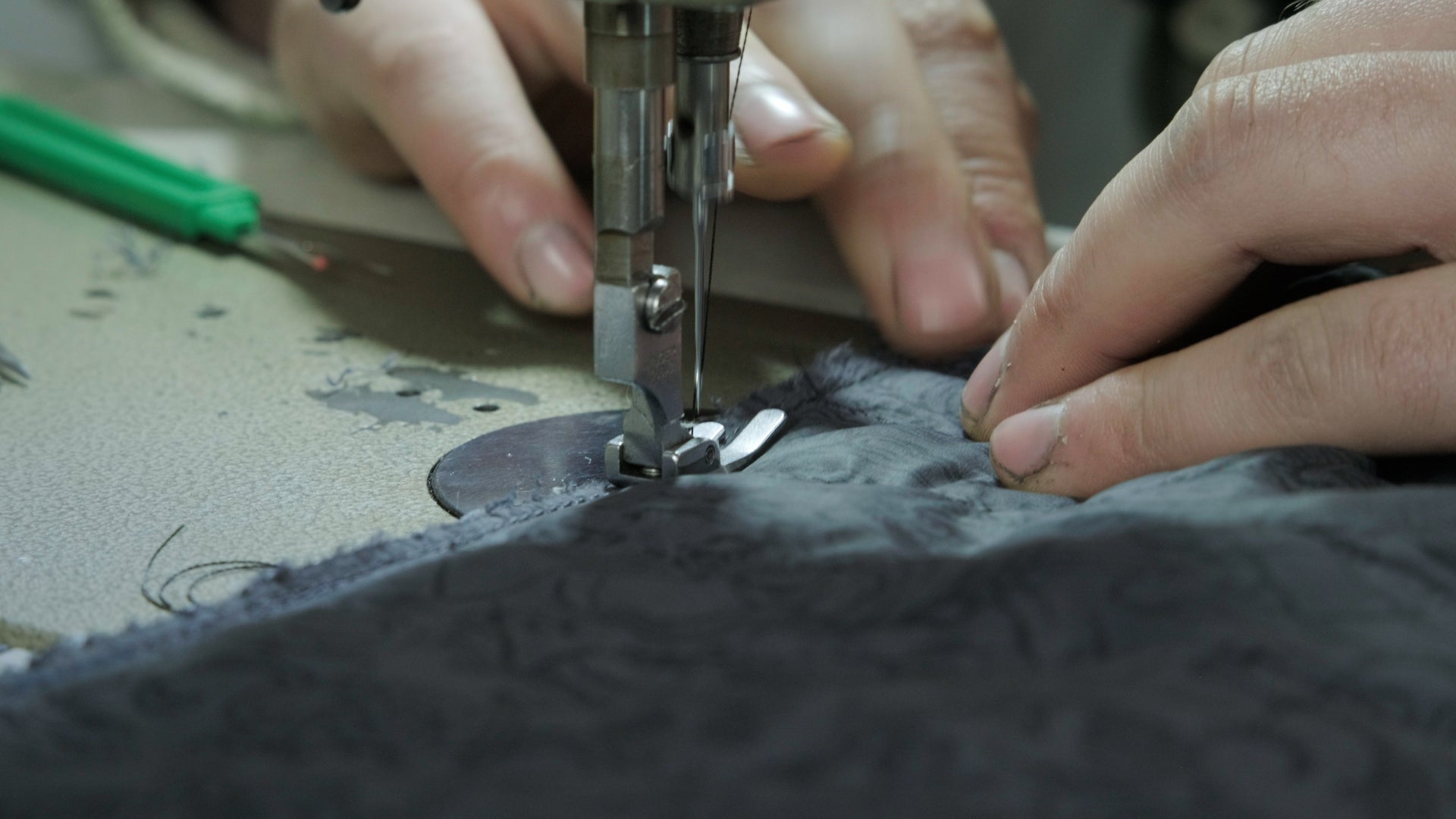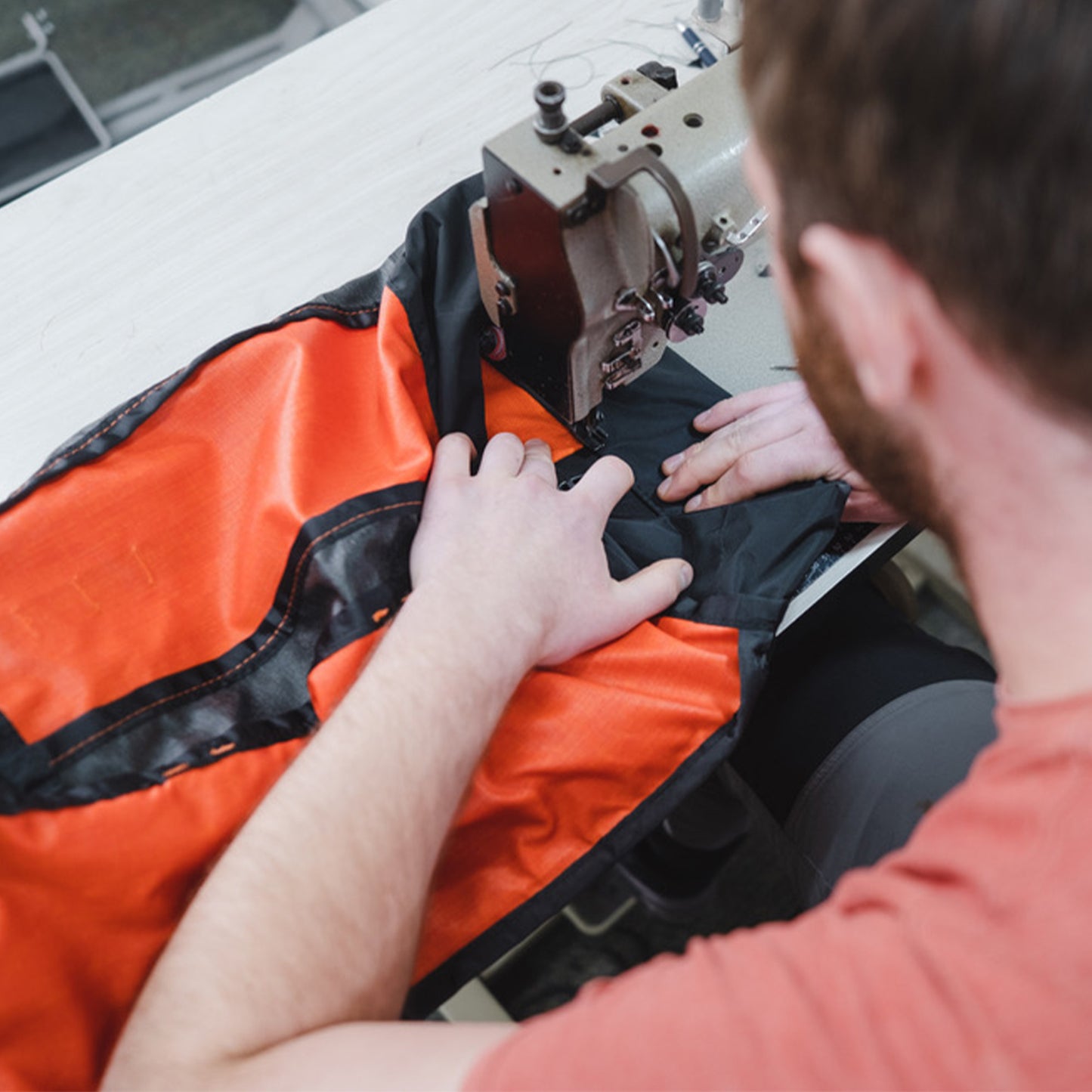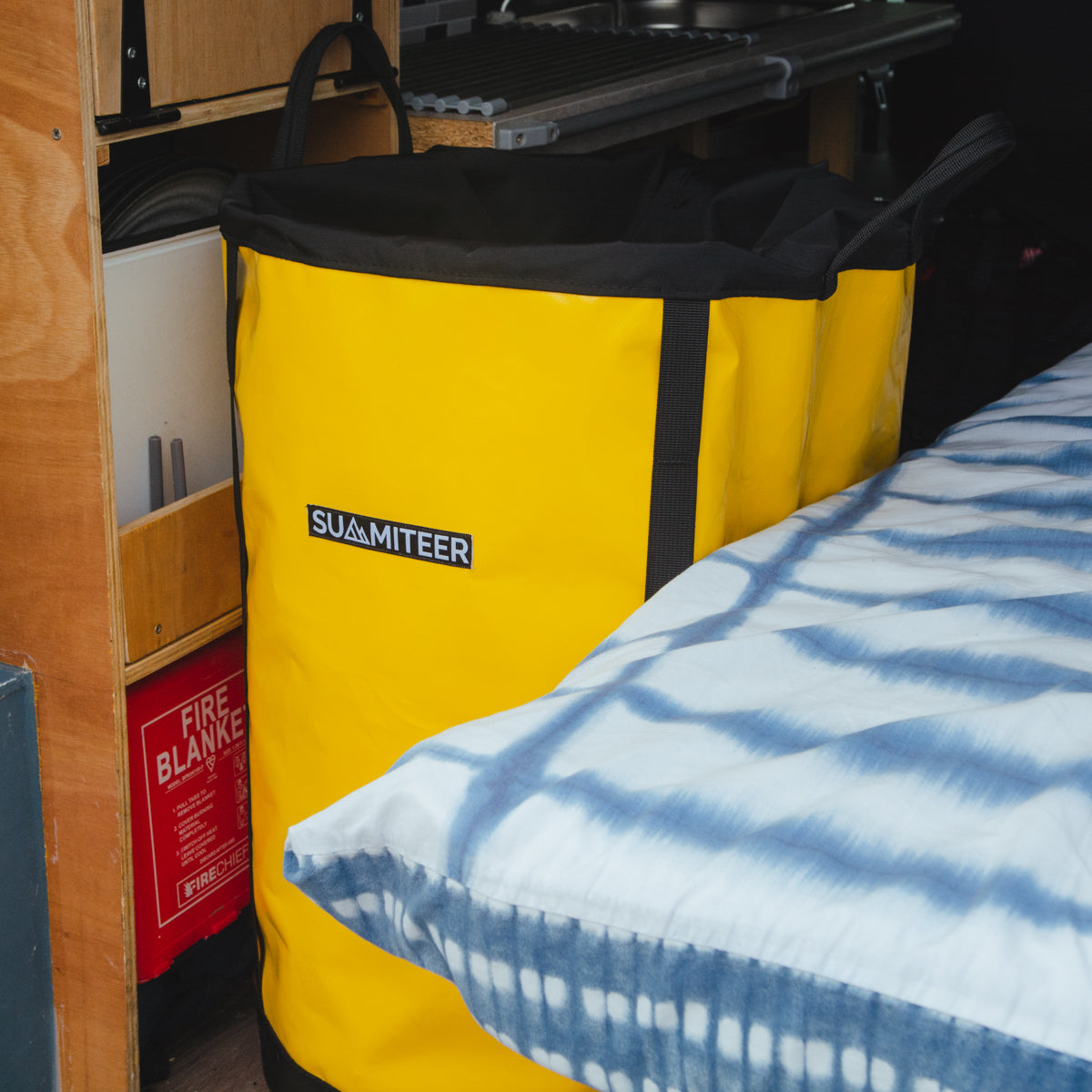
This article will guide you through the repair of a ‘stitch-through-construction’ down jacket with a damaged sleeve. By sewing on an additional piece of fabric over the damaged area.
This repair requires basic sewing (machine) skills, you will need:
A sheet of fabric (of around 10-15 denier)
A sewing machine
Tailor's scissors
A seam sipper
2 lengths of elastic
A lighter
Sewing machine thread
Tailor's chalk
Step 1 - Unpicking The Seams.


Unpick the elasticated cuff and sleeve seam, be careful with the sleeves binding as it will be reattached later. You need to unpick further up the sleeve than the area you want to repair so that you can lay flat the area that you'll be working on.
Step 2 - Roughly Cut The Fabric to Size.


Cut out a square peice of fabric. This needs to be significantly larger than the damaged area you will be recovering. It will be trimmed to fit later on. Then, using the tailor's chalk, mark both sides of the highest baffle seam you will want to recover from. Ensure you pick a seam that is high enough to cover the full area you are repairing.
Step 3 - Attaching the Fabric


Now for the sewing! Ensure the outer face of the fabric is face down on the outer of the jacket sleeve and rotate it so the top of the fabric just covers the baffle seam you have previously marked, all the baffle seams below this need to be visible. Now keeping the fabric lined up flip the sleeve over and sew along the inside baffle seam. Now trim the excess seam fabric to around 1cm. Flip the sleeve over and topstitch the same seam this keeps the fabric flush with the jacket. Ensure you are stretching the sleeve and fabric slightly for best results.
Step 4 - Sewing The Edges.


Sew down each edge of the sleeve to attach the fabric to the jacket. Make sure to keep the sleeve stretched as you sew. The bottom edge of the sleeve needs to be sewn on last.
Step 5 - Trimming Excess

Trim off the excess fabric.
Step 6 - Resewing The Baffle Seams


Flip the sleeve back over and sew along each inside baffle seam covered by the repair.
Step 7 - Resewing The Sleeve Seams



Now it is time to sew the sleeve back together. Pull the jacket inside out and carefully follow where the original seam was. Now reattach the binding as well, you may have to sew over this twice to make sure it's all attached.
Step 8 - Adding The Elastic Cuffs.


Add a new piece of elastic to both cuffs. Doing both means the repair looks more like ‘part of the jacket’. You don’t need to unpick the other sleeves old cuff if you don’t want, it can be added over the top and look just as good! When measuring the new elastic against the old cuff make it slightly shorter to account for the stretch it will have lost; run a lighter over the cut ends of the elastic to stop it from fraying. When sewing on the new elastic, first sew the elastic into a loop then onto the jacket starting at the sleeve seam for best results.
Step 9 - Done!

Done! Your jacket sleeve is as good as new and you won’t lose anymore down!
Please feel free to ask any questions in the comments below.



Excellent video, helping me repair my own walking gear.
Dave